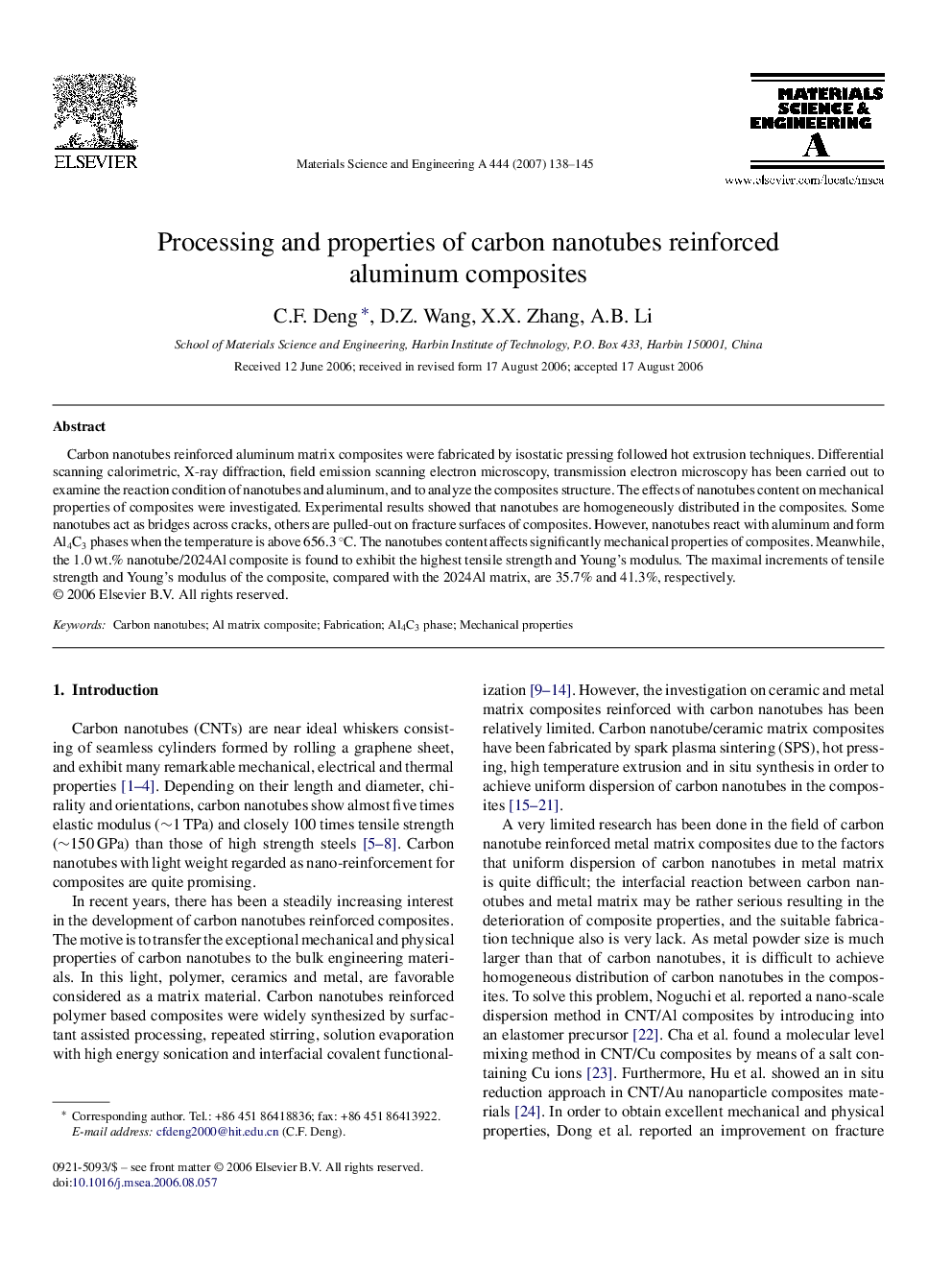| Article ID | Journal | Published Year | Pages | File Type |
|---|---|---|---|---|
| 1584722 | Materials Science and Engineering: A | 2007 | 8 Pages |
Carbon nanotubes reinforced aluminum matrix composites were fabricated by isostatic pressing followed hot extrusion techniques. Differential scanning calorimetric, X-ray diffraction, field emission scanning electron microscopy, transmission electron microscopy has been carried out to examine the reaction condition of nanotubes and aluminum, and to analyze the composites structure. The effects of nanotubes content on mechanical properties of composites were investigated. Experimental results showed that nanotubes are homogeneously distributed in the composites. Some nanotubes act as bridges across cracks, others are pulled-out on fracture surfaces of composites. However, nanotubes react with aluminum and form Al4C3 phases when the temperature is above 656.3 °C. The nanotubes content affects significantly mechanical properties of composites. Meanwhile, the 1.0 wt.% nanotube/2024Al composite is found to exhibit the highest tensile strength and Young's modulus. The maximal increments of tensile strength and Young's modulus of the composite, compared with the 2024Al matrix, are 35.7% and 41.3%, respectively.
